Why are these people smiling?
 photo by Yvette Kuiper
photo by Yvette Kuiper
Because they are structural geologists, and they are psyched to be at an extraordinary outcrop:
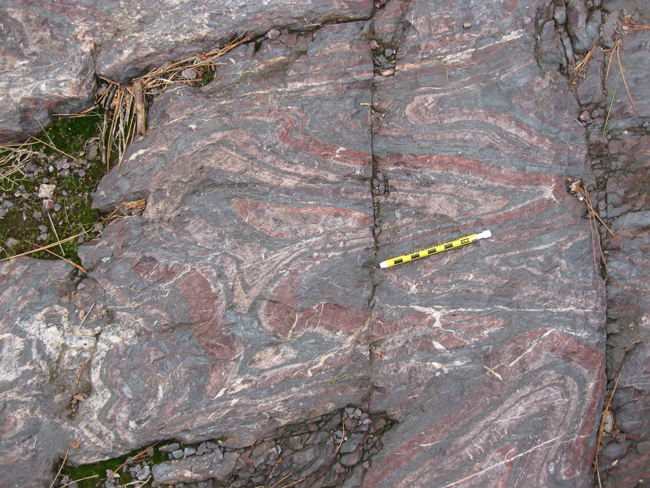
This is a famous pavement outcrop of polyphase-folded banded iron formation (BIF) near Soudan, Minnesota.
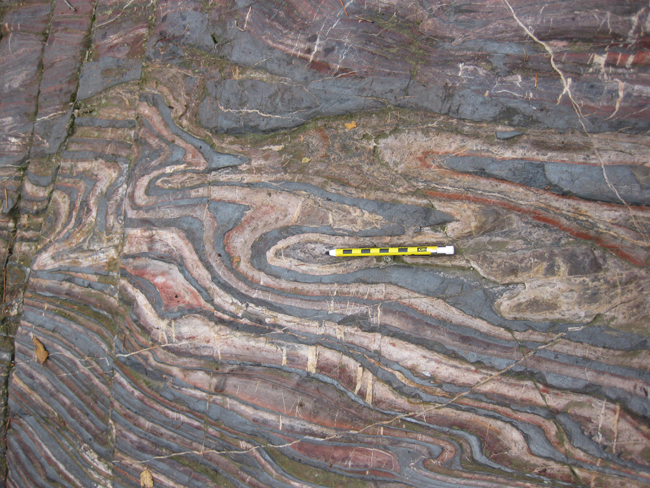
I went there last fall before the annual meeting of the Geological Society of America, on the Structural Geology of the Superior Craton’s sub-province boundaries field trip.

“Oh YEAH!”
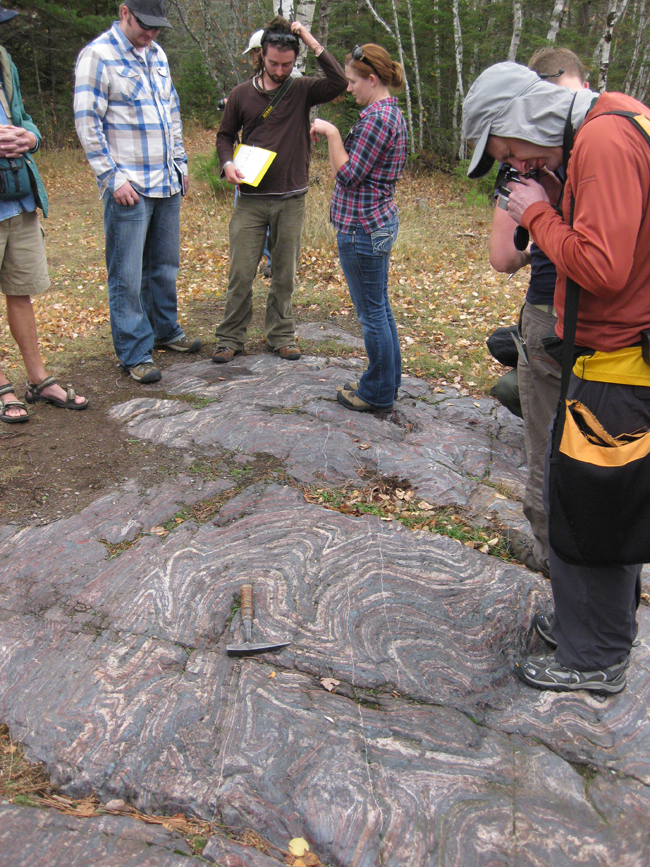
What you’re seeing here are layers of hematite (it’s listed as magnetite, but we found that it was not magnetic) and jasper. These are usually interpreted as chemical sediments whose formation would only be possible in a largely anoxic ocean. Later — perhaps while they were still precipitated goo on the seafloor, or perhaps post-lithification, they were folded up multiple times, resulting in distinctive fold interference patterns…
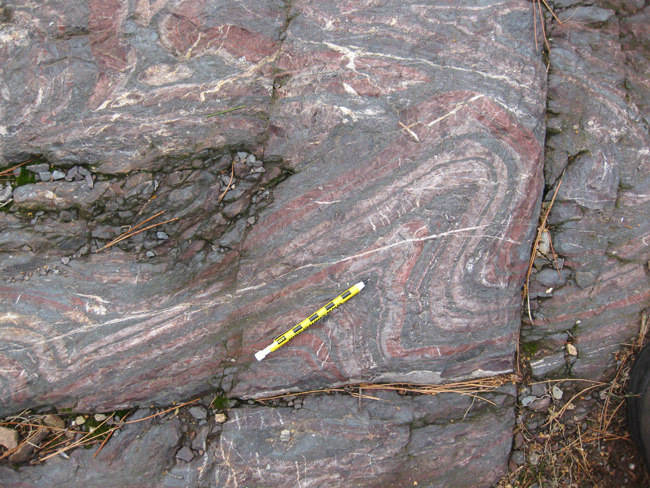
The Soudan BIFs are part of a larger stratigraphic sequence that includes lava flows and sedimentary deposits:
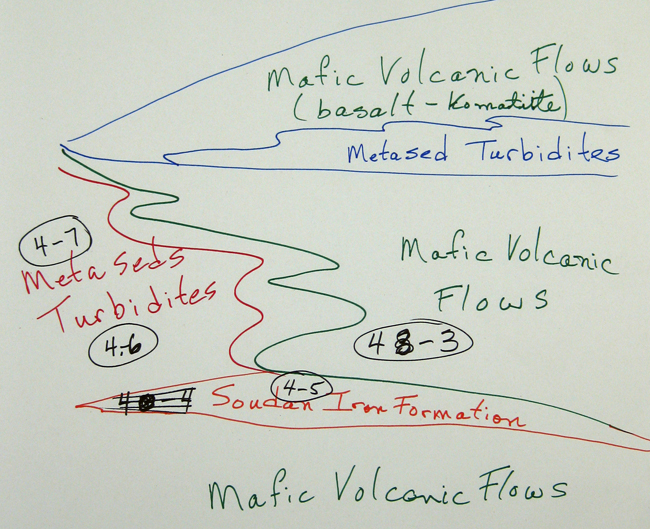



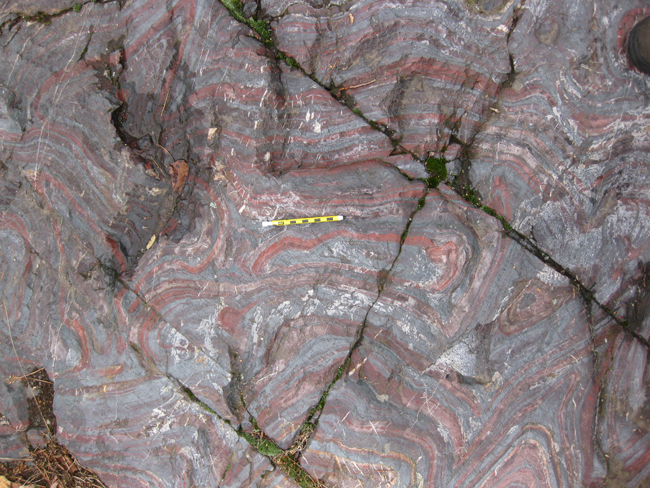
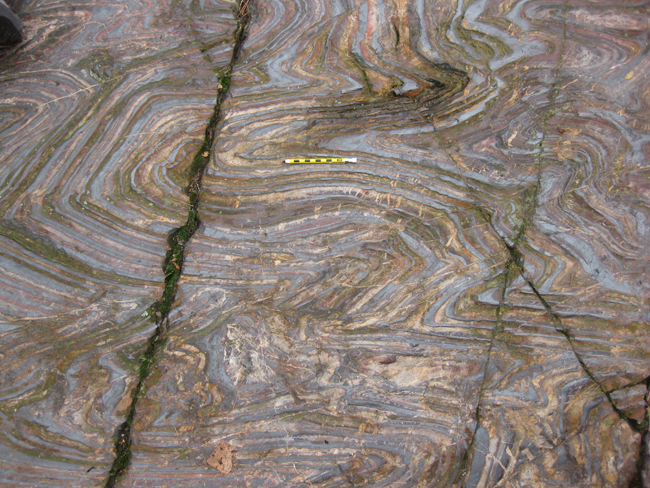

That last one (just above) is a classic fold interference pattern. See if you can produce it yourself with Visible Geology (hint: it will take two generations of folding at a specific angular relationship to one another)…

Got it yet? Okay, try these instead:

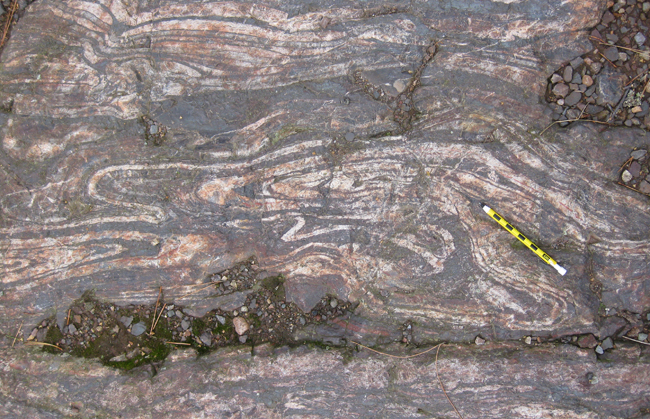
Here’s a big chunk that someone (not me) found off in the woods:
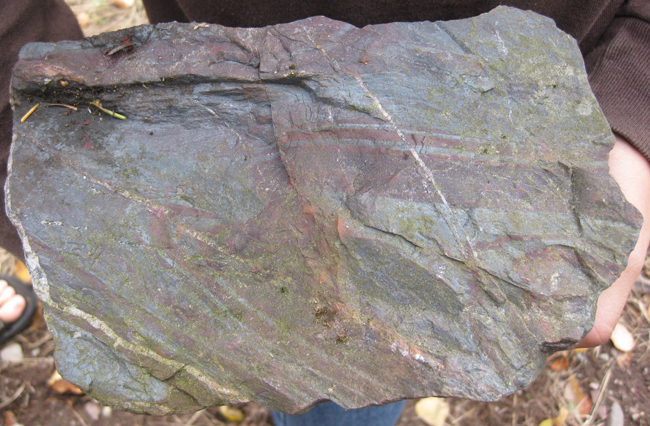
After my initial shock wore off, I was able to look more closely at the outcrop, and I saw some intriguing smaller-scale clues. For instance, consider this layer:

There are little grains in there! Sand-sized grains!
And not only that, but they’re elongated parallel to bedding… They appear to have been strained!
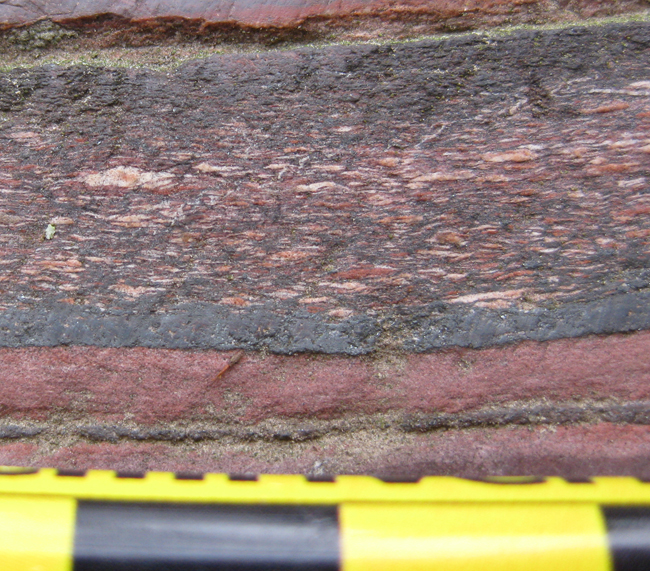
Another intriguing observation was that some of the big cherty layers had thin laminations within them. Check out the stripes inside this red jasper layer, for instance:
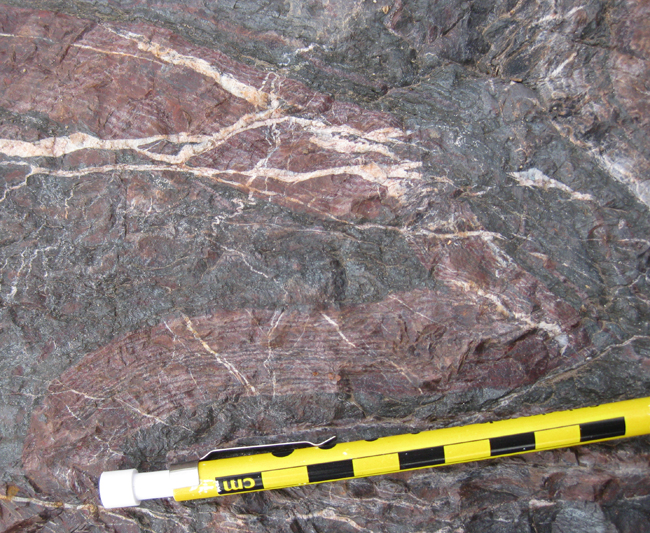
…or the ones inside this white cherty layer:
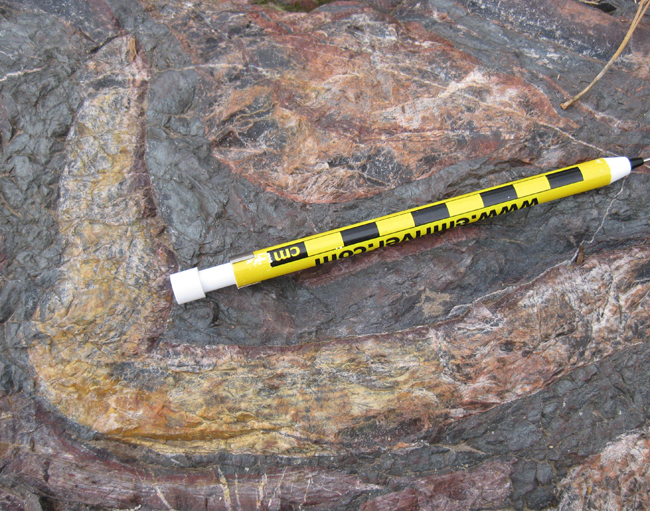
What do these laminations imply? Something was changing, semi-rythmically, with the deposition. And then there are the larger beds themselves, which exhibit variation over a longer tempo. What’s up with that? Are the big variations representative of daily tides and the smaller ones of fortnightly tidal cycles? Are we looking at “varve”-like seasonal variations with the small layers and perhaps some sort of orbital forcing with the larger ones? Or what? I wish I knew. These are intriguing data — I’m itching for a good story to tie them all together into something coherent.
And then there was the brittle deformation. Here are a suite of little fractures (full of white-colored milky quartz) as the stiff jasper layers broke during late, brittle deformation:
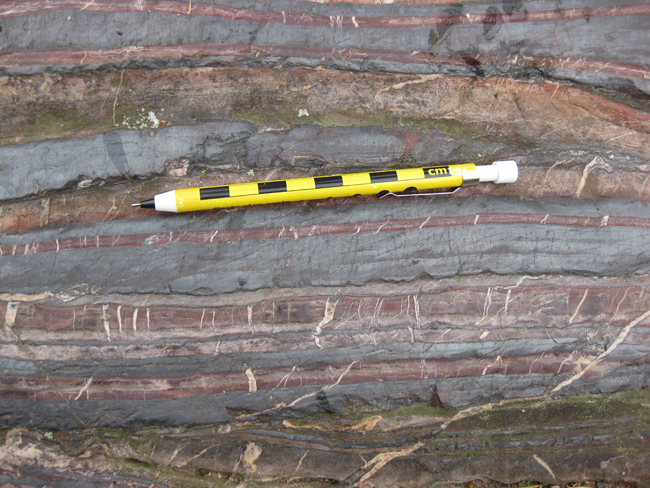
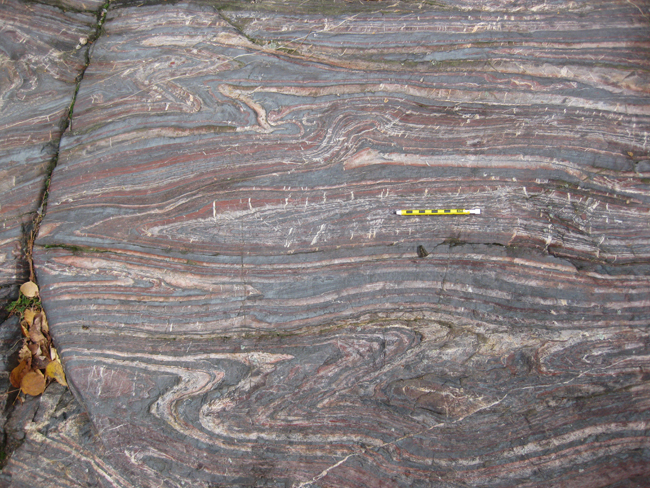
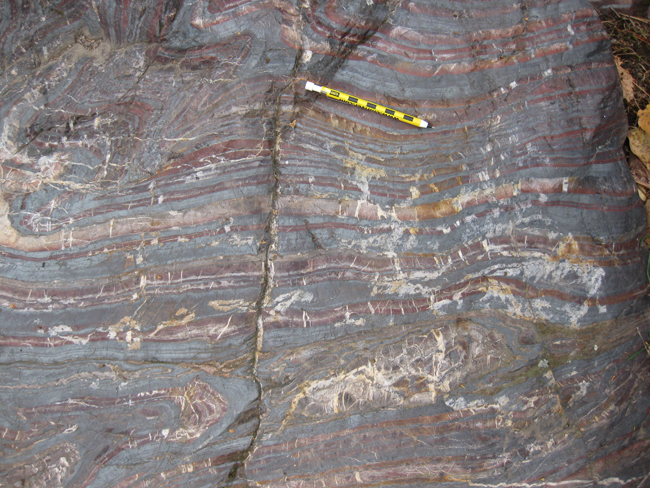
This area’s been shattered into shards of brittle BIF, and then glued back together with milky quartz:
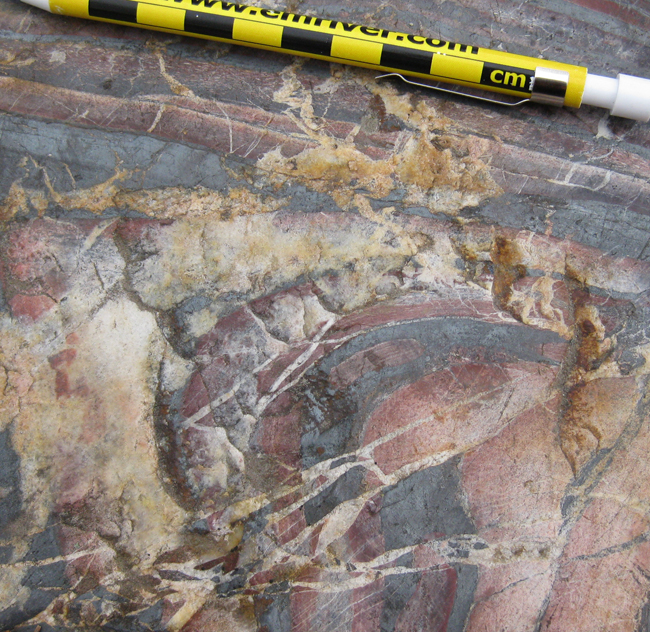
Sans any quartz veins, here are some offset strata that serve as markers recording small-scale faulting:
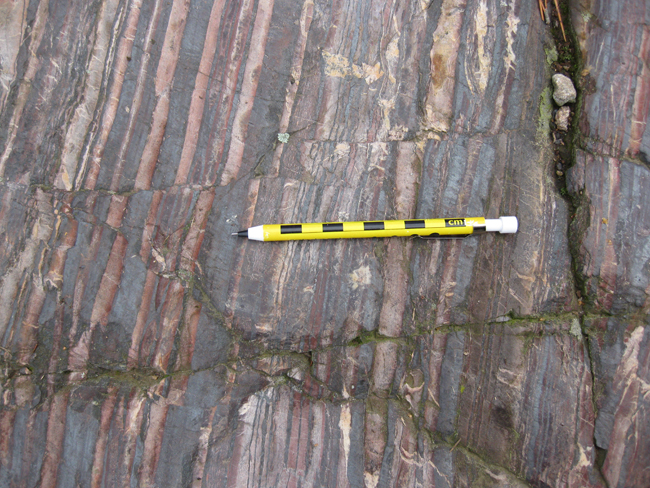
A few more “classics” to go out on…
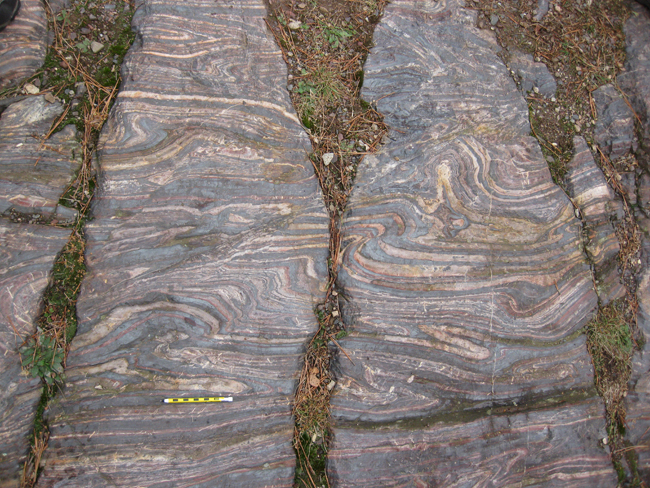
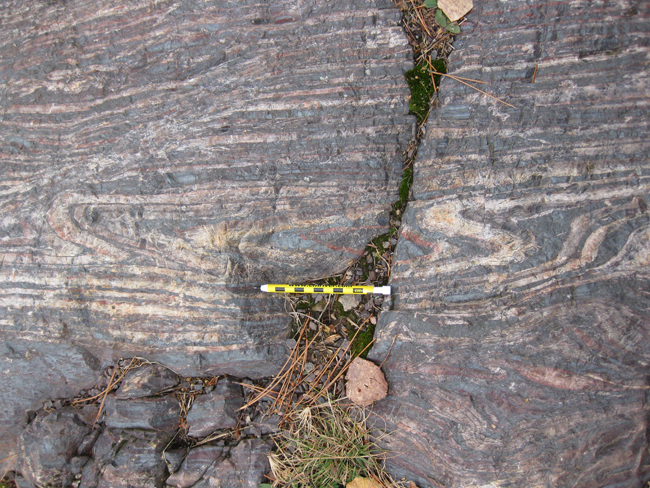
It’s been a good year for me and the world’s Archean banded iron formations. Between Soudan, Minnesota, and the Witwatersrand’s “Contorted Bed”, you might say that I’ve become BFFs with the BIFs.


Yummy! What would lead to a conclusion that folding was pre-lithification v. post-lithification? (maybe that’s another post)
Well, the little quartz veins are certainly post-lithification, but I guess these guys are so gunked up (perhaps in disagreement with tectonic strains elsewhere in the region) that some workers have suggested that maybe there was some soft sediment deformation first, followed by tectonic deformation at a later date. I don’t know their arguments in detail, though. Yes – a blog post for another time…)
Hey Callan-
What the heck would sand-sized grains be doing in a BIF? Turbidite? I can’t tell from the photo if there’s a possibility of grading.
(BTW, I took a couple classes from Basil Tikoff in undergrad– I’m entertained every time he shows up in my RSS reader!)
That’s what I said! I think these things are not only enigmatic, but possibly complicated too!
Nice post. I’ve been waiting for this one.
Some nice gigapans of these rocks here:
http://www.gigapan.org/gigapans?query=soudan
http://zoom.it/O0KE
I also visited during a pre-GSA trip.
Thanks Fred! I appreciate the links for readers who want to explore more on their own!
“you might say that I’ve become BFFs with the BIFs.”
[img]http://i1.kym-cdn.com/entries/icons/original/000/000/554/facepalm.jpg[/img]
I, too, would like to extend my thanks for your structural posts. I studied under Nick Rast: http://www.geolsoc.org.uk/gsl/pid/5939;jsessionid=A8387586E6E9BFE0FC615B106BA2765C
And, while I love it, I was enamored by the paleo adjuincts.
Still am, I.
A friend to undergrads, and post docs, alike.
Nicholas Rast… he was a pioneer.
Photo: http://lh4.ggpht.com/_NNjxeW9ewEc/TMLbx6fuv0I/AAAAAAAAOKM/1dUp48Ujom0/s1600-h/tmpAD62_thumb3.jpg
hey callan great photos as usual. i saw similar features in the Red Lake district in NW Ontario – they are definitely all soft sed there, as they are bounded by planar strata and often interfolded with hyaloclastic pillows. They also show quartz veins similar to your photos – which seem to cut across folds but also fan within them. From the contextual evidence I interpreted this to mean the veins were probably diagentic, probably primary opalline or cryptocrystalline silica phase, later recrystallized to quartz.
Did you see any flame structures? I’m looking for more examples.
No flames. If I had seen any, I would have photographed them and included those images here as part of the story. What do you make of the strained grains?
those strained grains are pretty cool. are they quartz now? I doubt, based on the apparent strain of the rest of the rock, that they were strained in the solid state. So if they are quartz now, maybe they replaced something else less rigid. They could have been ash or glass fragments, or amorphous silica particles, or even clay flocculates or carbonate grains? My obsession with flame structures in BIFs derives from some examples I saw in Red Lake, which have magnetite layers forming flames injecting upward into what is now a chert layer. Obviously if both magnetite and chert were primary, this would indicate that the magnetite was less dense than the chert – unlikely. Rumor has it there is a lot of replacement during diagenesis in these systems, so I’m trying to see if I can use the flame structures to make any inferences about density contrast of the primary materials.
ps. bold ‘stache!
Thanks. I grow this thing every couple of years for fun. It’s been gone since South Africa, though.